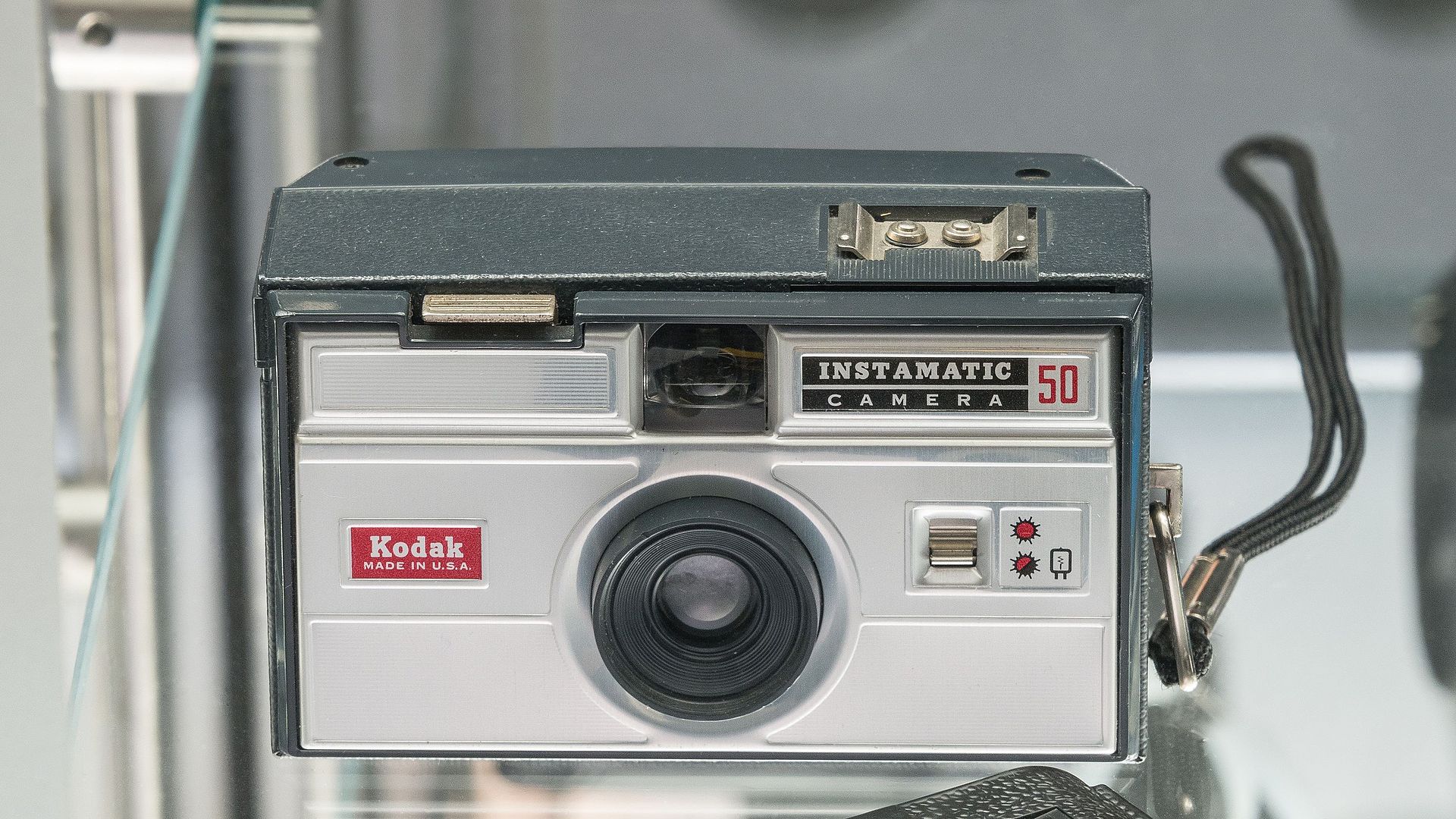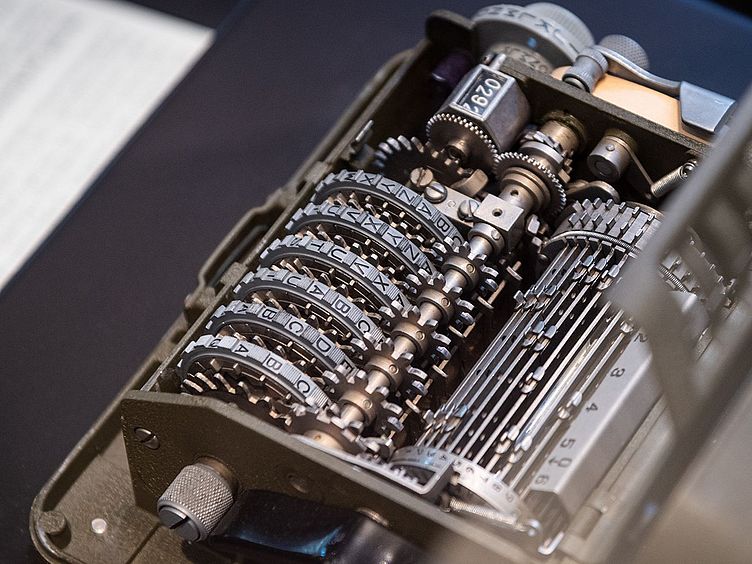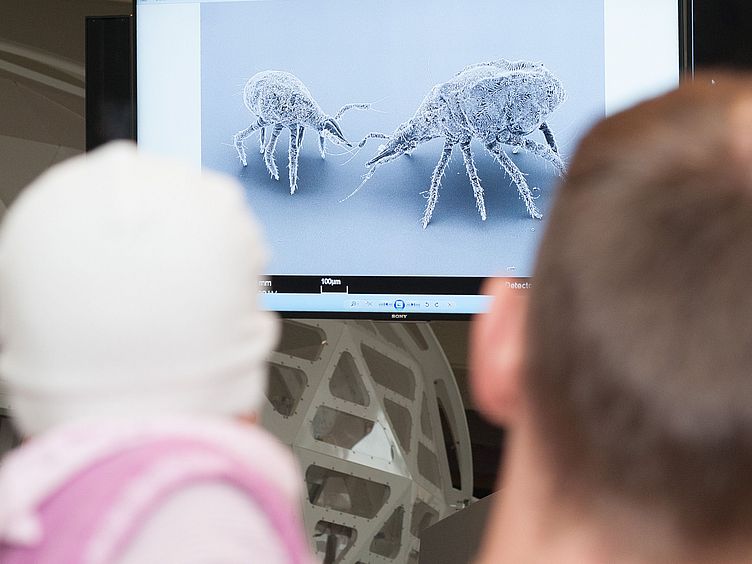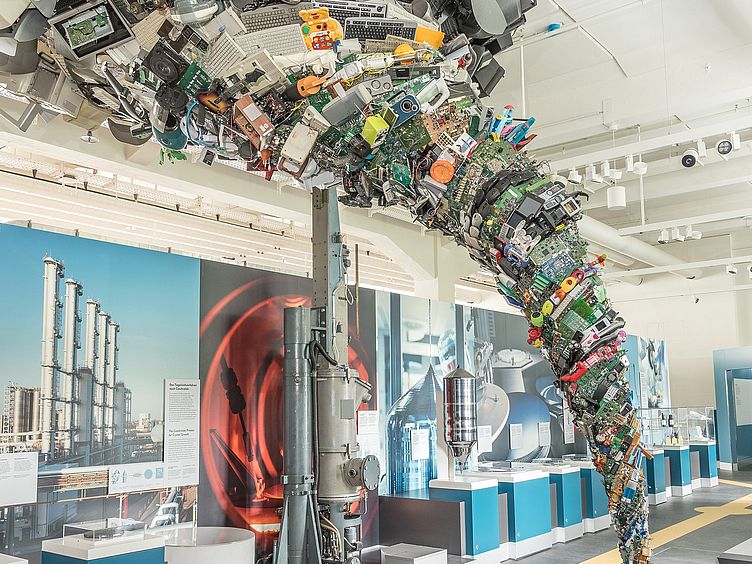
Photo: Deutsches Museum
Communication Information Media
Photography and Film – Image technology in focus
Here it’s easy to get the picture! Journey through the developments of the last 200 years: with numerous exhibits ranging from the laterna magica to smartphone cameras.
Photo and film exhibition – an overview
In Photography and Film, visitors can learn how the interrelationship between technology and the final image has shaped photography since its beginnings in the 1830s, and how it later influenced film. A large showcase extends through the centre of the exhibition, focusing on the historical development of equipment and reproduction media. It contains more than 300 objects representing 200 years of photography and film history – from the camera obscura, Le Daguerreotype and normal film cameras to daylight enlargers, beamers, scanners and digital single- lens reflex cameras. Visitors then get to learn how digital technology, colour, space and time influence the world of photography and film. Sound film and the ever-faster availability of photographic images and candid photos are also explored. Last but not least, the following area presents detailed information about the components and functions of camera technology. In the picture gallery, two selected image processes are presented: laterna magica plates as the forerunner of slide projection and then autochrome as one of the first-ever colour photography processes. The wide array of exhibits on display here gives fascinating insights into this cultural technology that is so commonplace today.
200 yearsof photography and film history
1200 objectsfrom the camera obscura, Le Daguerreotype to digital single-lens reflex cameras.
Highlights of the Photo and Film exhibition
Photo: Deutsches Museum | Reinhard Krause
The showcase
Time travel into the past: from Daguerre to DVD is the motto of the huge showcase that divides the exhibition space lengthwise. On the right, the eye first encounters the information side of the illuminated showcase. Via the sections Analogue - Digital, Automation, Media for the Masses, Industrialisation, Popularisation, Invention and Prehistory, one steps along the showcase back into the past. Many objects, plus graphics, texts and integrated screens tell the story of the development of the cultural techniques of photography and film.
Highlights of the photo and film exhibition
Le Daguerreotype. Alphonse Giroux, Paris, 1839, Inv. Nr. 4287. Photo: Deutsches Museum
Le Daguerreotype
Le Daguerreotype is one of many objects on display in the large showcase: made by Alphonse Giroux (1776–1848) to the specifications of photography pioneer Louis Daguerre (1787–1851), this wooden sliding box camera from 1839 is one of the few remaining original cameras from the founding era of photography.
“Photography is the simplest thing in the world, but it is incredibly complicated to make it really work.”
Lichttonfilm-Projektor Triergon, 1923, Inv.-Nr. 63094. Photo: Deutsches Museum
A Needle and Optical Film Projector
In 1919, Joseph Engl, Joseph Massolle and Hans Vogt founded the inventors’ association Tri-Ergon (Greek “the work of three”) in Berlin. They developed the principle of optical sound film that records sound photographically, and held the first screenings as early as 1922. Other rarities to admire in the exhibition area on sound film include the Biophon gramophone and the Panzerkino constructed by Oskar Messter (1866–1943), which combined picture and sound recordings by using a record and a cinema projector – even before World War I-Facts and Figures
- Location: Level 2
- Exhibition space: 500 m2
- Exhibits: 1200
- Demonstration and media stations: 10 and 16
- Diorama: 1
When will this event take place?
Discover which activities are taking place by checking our daily programme, which is published at around 9.20 each day. Our programme changes daily and includes guided tours, demonstrations, science shows and hands-on activities for individual visitors and small groups of up to five people. All programme events are held in German. They begin either directly where the activity is set to take place or at a guided-tour meeting point in the relevant exhibition.
View Inside the Photography and Film Exhibition
Any Questions?
Dr. Sonja Neumann
Curator
Department of photo and film technology, writing and printing technology, paper technology and office technologyDeutsches Museum
80306 MunichTelephone +49 89 2179 350
Fax +49 89 2179 99350
Email Sekr-Ausstellungen-Sammlungen@deutsches-museum.de
Do you have organizational questions?
Cornelia Schubert
Assistance to department heads, main department heads and curators
Susanne Schmölz
Assistance to department heads, main department heads and curators

![[Translate to English:] Polaroid Model 95 Land Camera.](/assets/_processed_/1/6/csm_Ausstellung_Foto_und_Film_Polaroid_Model_95_Land_Camera_CD_86696_dccc286853.jpg)












